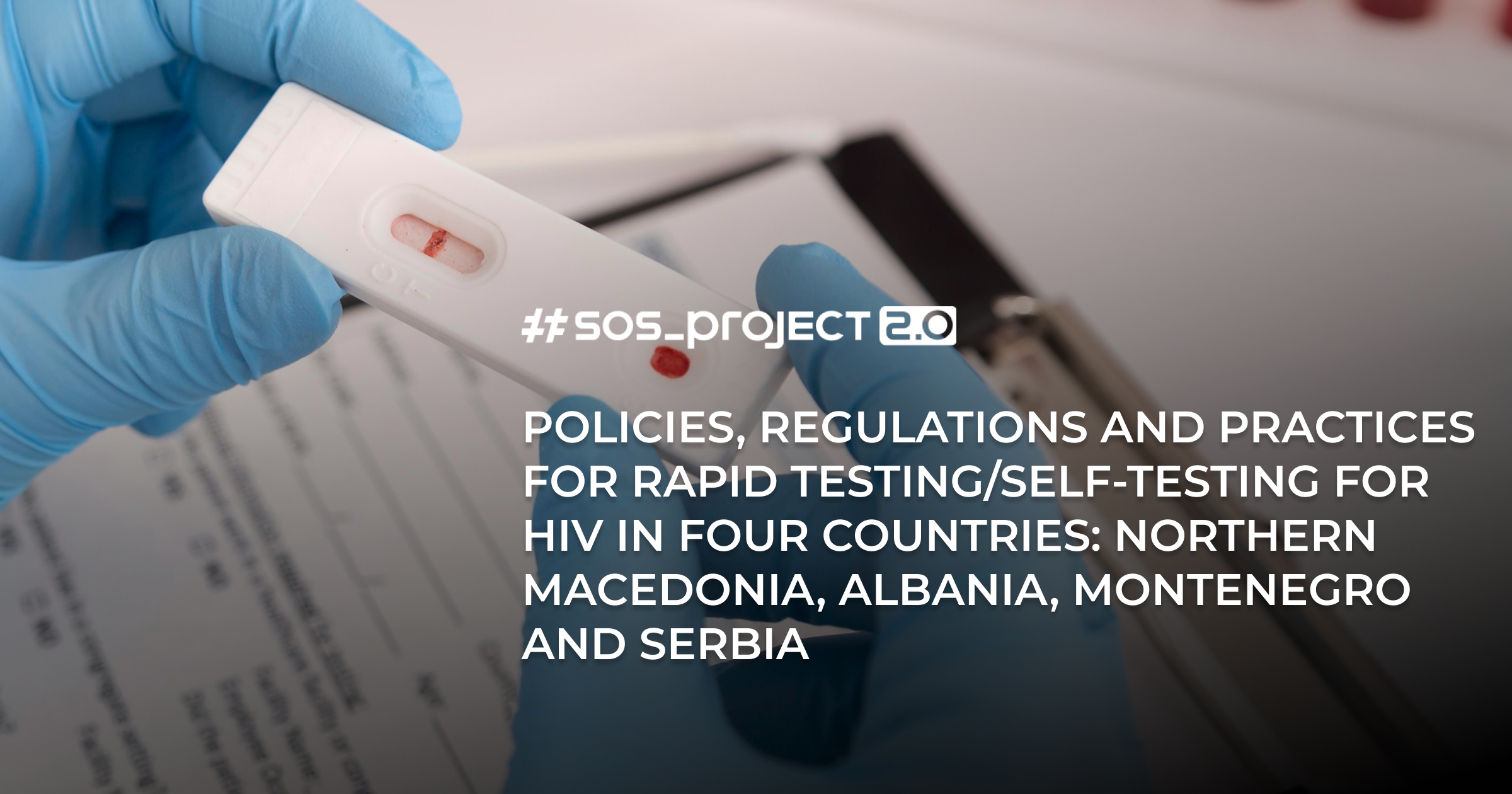Here is an important document on policies, regulations and practices of rapid HIV testing / self-testing in four countries of South-Eastern Europe: Northern Macedonia, Albania, Montenegro and Serbia.
In the document you will find:
- A summary of approaches to providing HIV testing services to best reach PLHIV, including HIV self-testing.
- An overview of the methodology used.
- Key results of the rapid HIV testing/self-testing policy and recommendations for each country separately.
Facts and figures for us to consider:
One in five people with HIV remain unaware of their status despite the availability of testing, treatment and prevention services. The number of people living with HIV continues to grow, and this demands our attention.
The WHO Global HIV Strategy aims to reduce the number of infections and deaths, and HIV self-testing can help us do just that. It is a convenient and confidential way of testing that enables more people to know their status and get support when needed.
HIV self-testing is a process that allows you to take a sample of your own fluid or blood, perform the test and interpret the result on your own or with a trusted person. WHO recommends it as a safe and effective method, especially for those who cannot be tested in other ways, including key populations.
Self-administered HIV test results must be confirmed by a trained health care provider in order to make an accurate diagnosis and initiate appropriate treatment, if needed.
Our partners are working to develop effective strategies to implement HIV self-testing and improve the availability of testing at the community level. This is an important step toward taking charge of our health and the health of our community.
Read the document: https://sos.aph.org.ua/wp-content/uploads/2023/02/policies-regulations-and-practice-of-hiv-rapid-testing-self-testing-in-four-see-countries-north-macedonia-albania-montenegro-and-serbia_v2.pdf?fbclid=IwAR0wbXHx6-juHdlf6025Vkk-YBnBzbLlAr8d2r8Z8aWQubsbt0ByfzVCkrU






